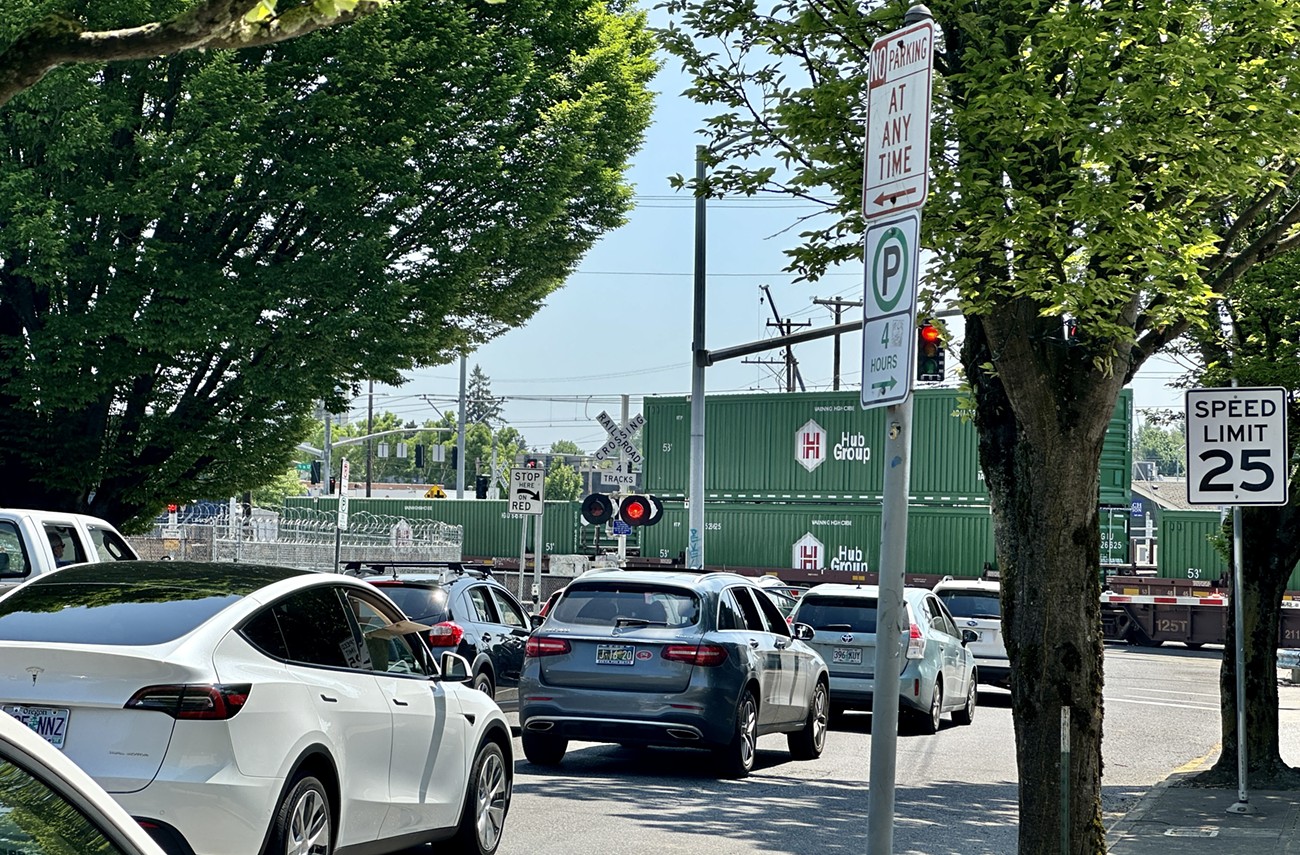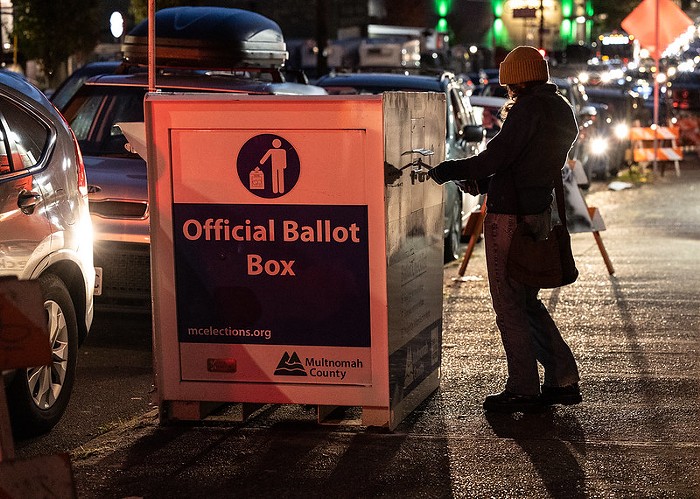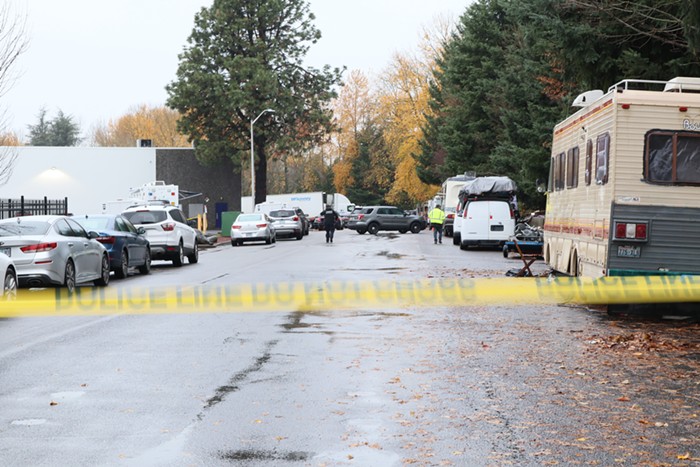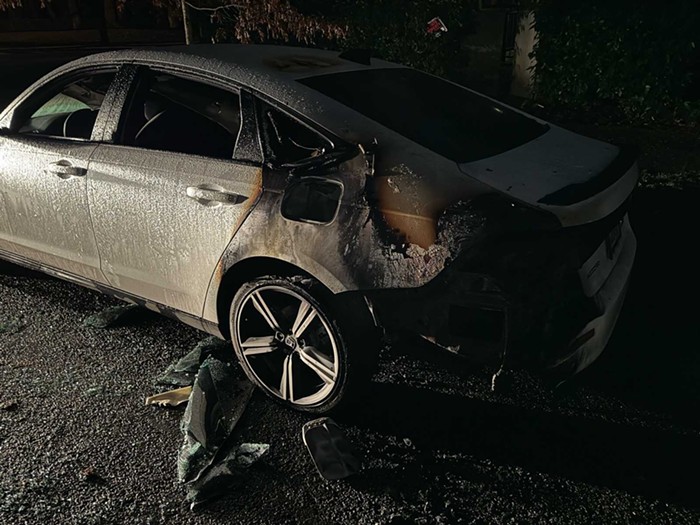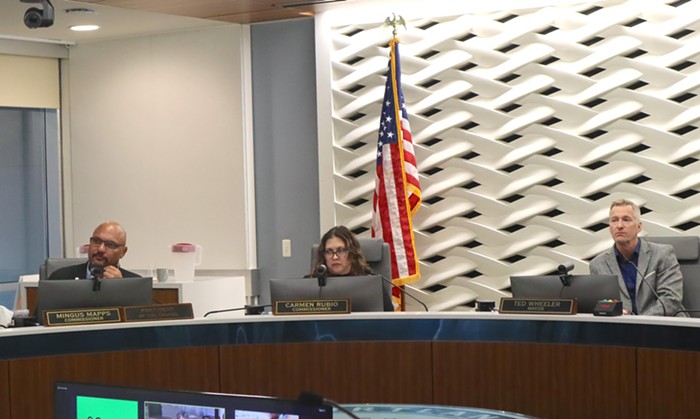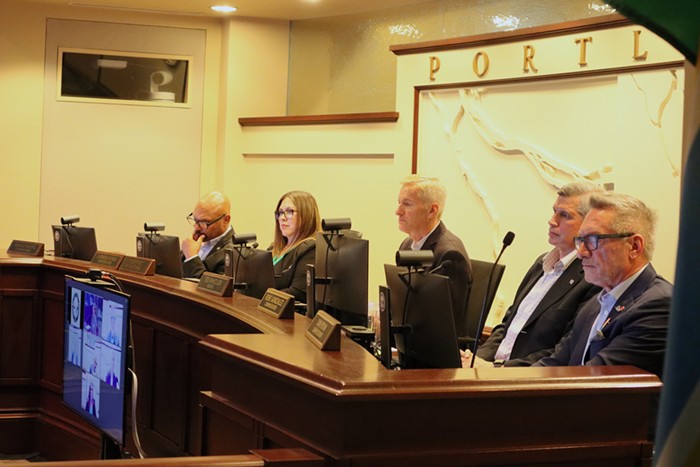Anyone who frequents inner southeast Portland is familiar with the persistent—yet unpredictable—freight train bottlenecks near railroad crossings in the area. Union Pacific freight trains rolling into town via the Brooklyn Intermodal Rail Yard cause such notable logjams in Portland's Central Eastside that more than 1,500 people signed a Change.org petition asking the Portland Bureau of Transportation (PBOT) to do something about it.
Now, thanks to a $500,000 grant from the U.S. Department of Transportation (USDOT), the city hopes to do just that.
Last summer, PBOT planners announced the bureau would apply for a planning grant through USDOT's new Railroad Crossing Elimination Program, which receives funding from the Infrastructure Investments and Jobs Act. The program allocates grants nationwide for jurisdictions to plan or build railroad crossing improvements that "maximize the safety and efficiency of the U.S. rail network."
“The train blockages encourage unsafe behavior," PBOT planner Zef Wagner said during an August presentation addressing the railroad crossing woes. "Drivers might try to beat the gates if they see a train might be sitting there for a long time, and people walking and biking will sometimes hop the trains, which is really unsafe."
The $500,000 federal grant will be supplemented with $150,000 from PBOT. The local match is funded with Central Eastside parking permit surcharge revenue and PBOT's heavy vehicle use tax. With this grant, PBOT will examine 15 at-grade crossings in Portland's Central Eastside, hoping to find a solution to the "frequent blockages [that lead to] safety and congestion issues."
This isn't enough money to start building anything yet, but PBOT Public Information Officer Dylan Rivera told the Mercury it's a good start.
"This is really great news for us," Rivera said. He said the grant will fund a report containing recommendations for short-term and long-term fixes to help Portland overcome freight train obstructions. "[The long-term fixes] could involve capital construction dollars to adjust the freight tracks themselves or to build some improvements, like a bridge or under crossing to separate travelers in the area from freight."
Freight train blockages aren't a new inconvenience for people traveling around Portland, but the problem has become even more noticeable in recent years. Freight rail operators have made cargo-carrying trains longer, saying it's cheaper and more energy efficient. Union Pacific's trains are 30% longer today than they were in 2018, when the rail company switched to a new service model to accommodate more freight capacity. The switch has resulted in extra-long wait times at railroad crossings nationwide, which local jurisdictions have no control over.
"We’re as frustrated as the public is with the lack of responsiveness we get from Union Pacific," Rivera told the Mercury. "We have zero authority to influence what they do."
In Portland, freight train blockages are especially prominent on the city's east side: north of Powell Blvd and south of Stark St. People in other parts of town are impacted, too, but PBOT said they want to deal with the Central Eastside first.
"We’ve identified the Central Eastside as having among the most critical needs for railroad crossing improvements, but certainly there are other neighborhoods that have needs," Rivera said to the Mercury. "We’re hoping that what we learn in the Central Eastside will help us better understand options that could be applicable in other areas."
To advocates who have been pushing the city to make changes at the railroad crossings, news of federal funding comes as a relief.
"Any funding to help relieve a constant bottleneck in Southeast Portland is much needed," Andrew Lindstrom, a transportation advocate who lives in the Brooklyn neighborhood, told the Mercury. "Hopefully the study will find good ways to mitigate the root causes of Union Pacific assembling mile plus long intermodal trains in a yard that is too small to handle the trains without stopping to block a key local street connection."
Brooklyn neighborhood resident and accessibility advocate Josh Hetrick has led several informational campaigns to help people avoid getting stuck at the rail crossings, including a website that offers alternate route ideas.
"I’d say that with longer and longer trains becoming the norm now, more study—and hopefully action—is definitely welcome," Hetrick told the Mercury. "The Bob Stacey Overcrossing elevators are out (again), and the #70 bus route was changed in part to avoid delays at that intersection, so this is something that’s increasingly disruptive to the area."
Rivera said PBOT hopes findings from the railroad crossing study will be released by 2025. From there, the bureau will look into finding more funding for solutions.
